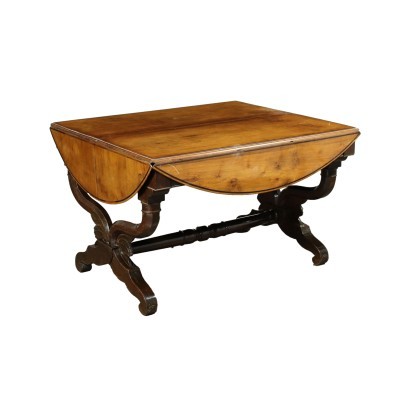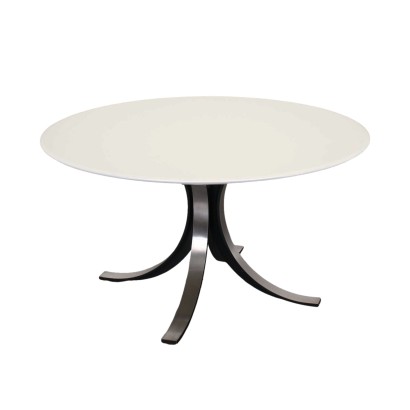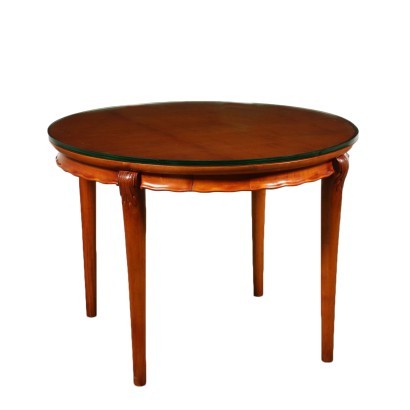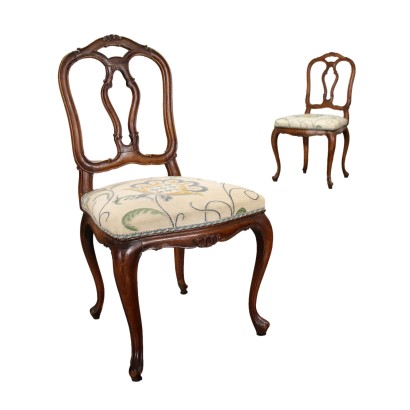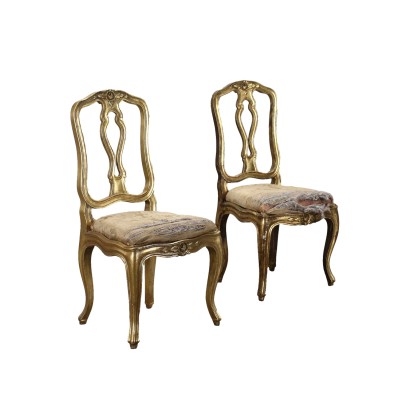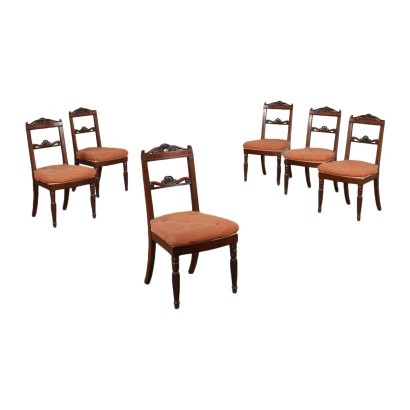Table With Openable Wings Mahogany Walnut Italy 19th Century
Features
Style: Riproduzione in Stile
Age: 19th Century / 1801 - 1900
Origin: Italy
Main essence: Satinwood , Walnut
Material: Solid Walnut
Description
Table with opening flaps 19th century. Rectangular in shape, it has 4 opening flaps on the sides which, when opened, transform it into an oval table. The flaps are made of mahogany while the rectangular top is made of walnut veneer, the structural part is made of walnut. The top has ebonized threads, the legs are shaped, carved and connected by a turned crossbar. Made on an English model.
Product Condition:
The item shows signs of wear due to age. Any damage or loss is displayed as completely as possible in the pictures. It may require restoration and recovery of french polish. Product with a Certificate of Authenticity and Lawful Origin.
Dimensions (cm):
Height: 79
Width: 124
Depth: 105,5
Maximum size (cm):
Width: 178,5
Depth: 146,5
Additional Information
Style: Riproduzione in Stile
Age: 19th Century / 1801 - 1900
19th Century / 1801 - 1900 Main essence:
Satinwood
The name is common in France for citrus limonum , the fruit tree of the lemon. From this plant a light, solid and fragrant wood is obtained, used in the construction of furniture especially in England and France, where it was appreciated for its resistance.
Walnut
Walnut wood comes from the plant whose botanical name is juglans regia , probably originally from the East but very common in Europe. Light or dark brown in color, it is a hard wood with a beautiful grain, widely used in antique furniture. It was the main essence in Italy throughout the Renaissance and later had a good diffusion in Europe, especially in England, until the advent of mahogany. It was used for solid wood furniture and sometimes carvings and inlays, its only big limitation is that it suffers a lot from woodworm. In France it was widely used more than anything else in the provinces. In the second half of the eighteenth century its use decreased significantly because mahogany and other exotic woods were preferred.
Material: Solid Walnut



